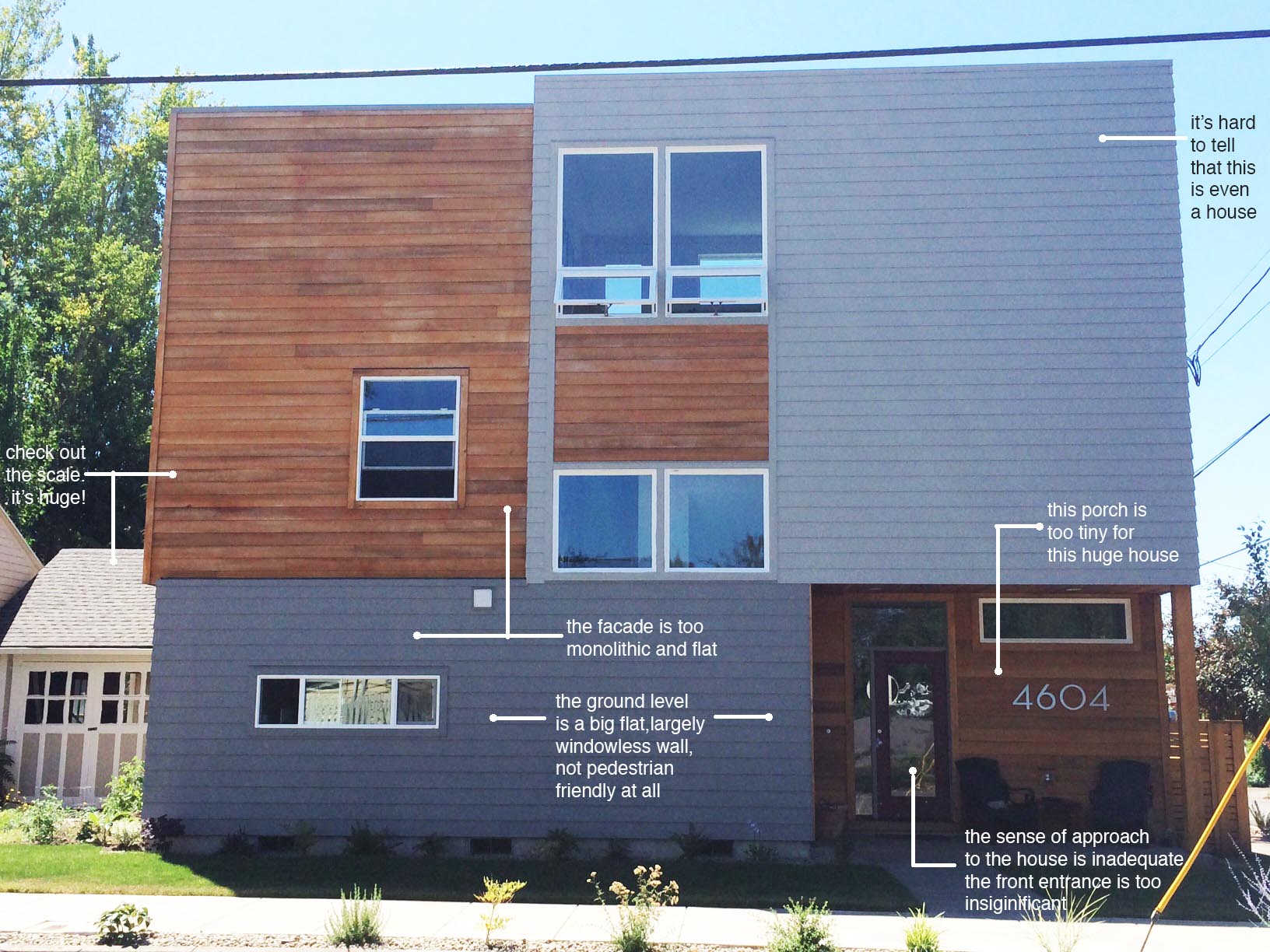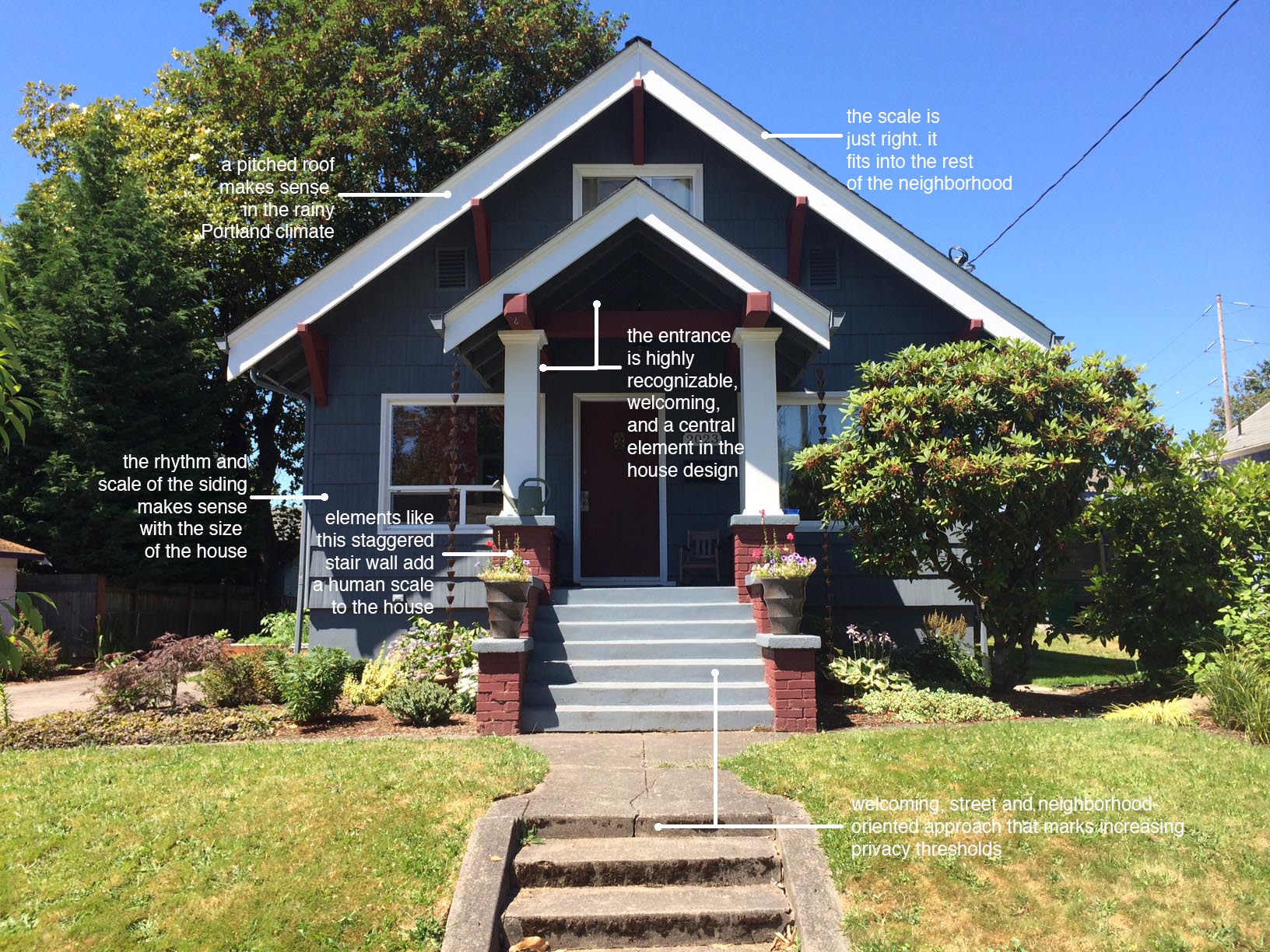Why Some Modernist Homes Make Bad Neighbors
I grew up as an architect loving modernism and its clean lines, its spartan rectilinear shapes and its honesty of materials. But now that I've gotten some distance from my modernism-centric education, I see how modernism can go wrong, especially on a residential scale in established neighborhoods.
As I've written emphatically before, I don't think the solution is to copy historic homes, but to create a new contemporary architecture that reflects the materials, sensibilities and values of today while still honoring timeless and universal principles of being neighborhood and people oriented. Historic homes celebrated the front porch, for example, fostering a social connection between a household and it's neighbors. Plus they were welcoming and you knew right away where the front entrance is.
Many modernist contemporary homes are very inwardly focused, with no porches and a hidden front entrance, which make for an unwelcoming, fortress-like feeling and so they do not make good neighbors. But this is not to say that modernism on a residential scale can't be done well. Northwest modernist Pietro Belluschi's homes are a great example of a residential architecture that not only fits into the neighborhood, but enhances it. Southwest architect Ralph Haver had the same knack.
Below is an particularly stark example of contemporary modernism gone wrong in an established historic neighborhood in contrast with a historic home that has been updated, but which retains the principles of neighborhood-friendliness and human scale.
Modern House:
Historic House:
Photo Credit: All photos by the author.


